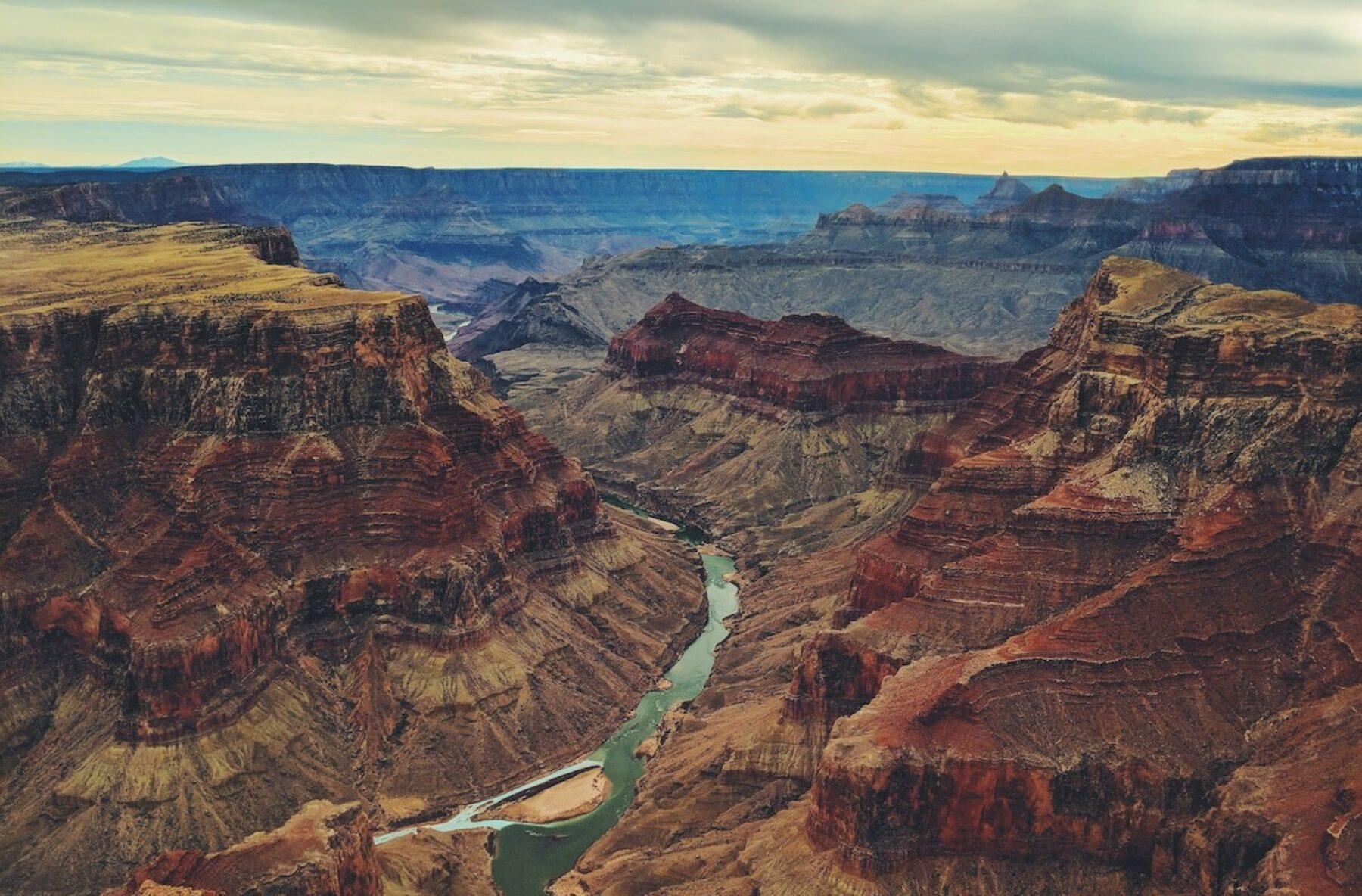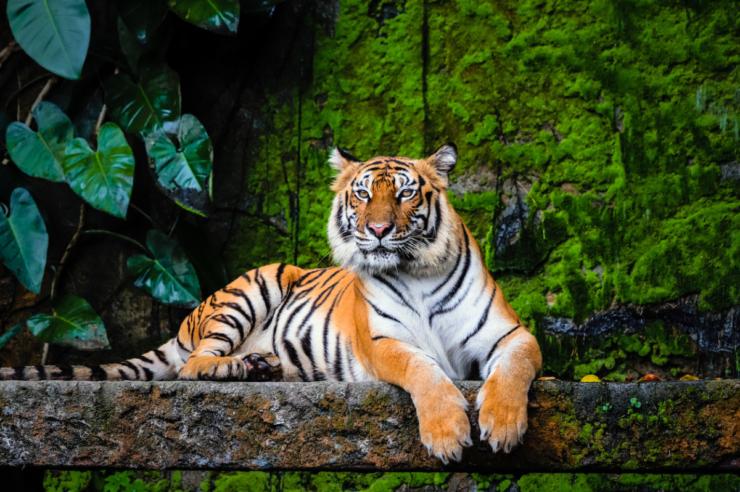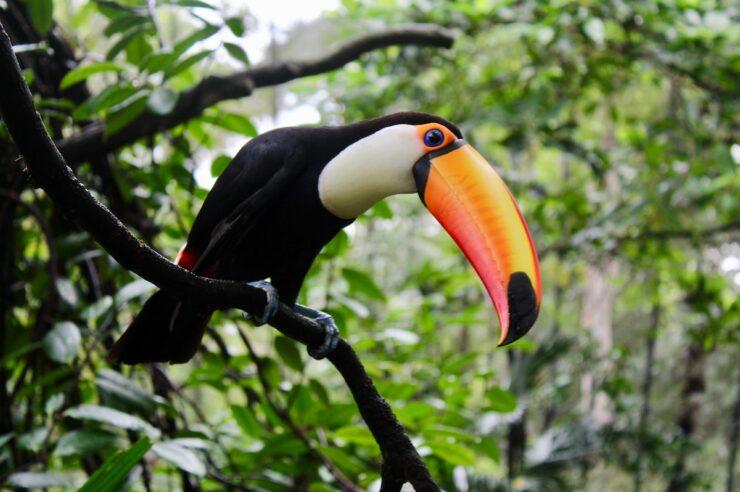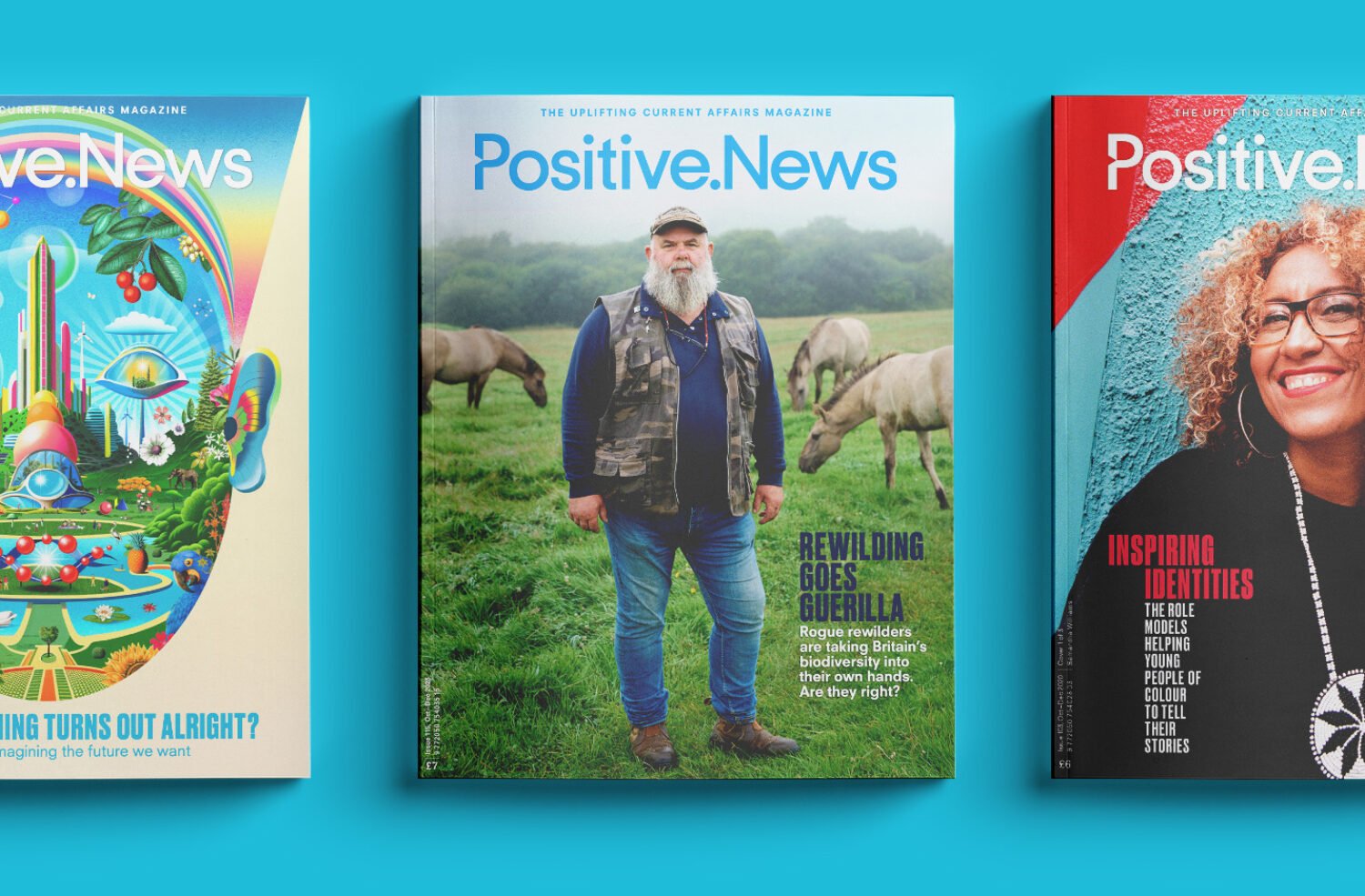Gabon sealed a deal to protect nature, the ‘holy grail’ of energy inched closer, and a rare monkey came back from the brink, plus more good news

In some welcome good news from west Africa, Gabon has sealed a ‘debt-for-nature’ swap worth hundreds of millions of dollars, pledging around $75m (£59m) for marine conservation over the next 15 years.
Debt-for-nature is a form of debt relief for developing countries. It can involve reducing interest rates or even writing off debt entirely. Nations commit to investing the savings in local environmental measures, which can provide an economic boost.
The Gabonese government bought back almost $500m (£392) of foreign debt using a loan from the Bank of America. “It’s like borrowing from Peter to pay Paul – but Peter’s giving a better interest rate,” explained Paul Steele, chief economist at the UK’s International Institute for Environment and Development.
Gabon has the largest expanse of marine reserves in Africa. Stretching over 53,000 sq km (20,460 sq miles) they are home to the world’s biggest nesting population of leatherback turtles.
Although debt-for-nature swaps have already been done in other countries, including Belize and Ecuador, the Gabon deal is a significant moment, Steele told Positive News.
“It’s the first big deal in Africa, and the first time a big American bank has got involved,” he said. “It’s not some little, niche product anymore – it’s going mainstream. We have an environment and nature crisis, and we have a debt crisis – we can resolve both with one tool.”
Image: Ralph Messi

Bright sparks in the US have proved they are more than a flash in the pan by repeating a historic nuclear fusion breakthrough in their quest to recreate the process that powers the sun.
Fusion harnesses the heat produced in merging atoms together and is seen as the holy grail of near-limitless clean energy. Unlike fission, or ‘splitting the atom’ – used in existing nuclear power stations – there’s no risk of a chain reaction meltdown, and no dangerous radioactive waste at the end of the process.
Scientists at the Lawrence Livermore National Laboratory, California, used lasers to create the super-hot temperatures needed for fusion to occur. Their Oppenheimer moment came in December last year when they achieved the first ever net energy gain – where the fusion energy output exceeds that input by the lasers – and it was revealed this week that they’ve done it again, although detailed findings have yet to be released.
Dr Robbie Scott, from the UK’s Science and Technology Facilities Council, has been a close collaborator of the Livermore team. He told Positive News that repeating the experiment proved an understanding of its underlying physics. “Now we can go on to improve it with the ultimate goal of one day generating electricity using fusion,” he said.
Image: Hal Gatewood

Iraq has become the 17th country to eliminate trachoma as a public health problem, according to the World Health Organization (WHO).
Trachoma is the leading infectious cause of blindness worldwide. The disease can spread from person to person through contaminated fingers or flies that have come into contact with discharge from the eyes of an infected person.
Improvements in sanitation helped Iraq defeat the disease, which is endemic in parts of Africa, Asia and Latin America. Dr Ahmed Al-Mandhari, WHO regional director, described Iraq’s victory over trachoma as “a remarkable achievement”.
Image: Levi Meir Clancy

For decades it’s been a symbol of Brazil’s conservation effort, now the golden lion tamarin is back from the brink, with more of the long-tailed monkeys jumping around the Atlantic rainforest than at any time in the last half a century.
Golden lion tamarins – found only in Rio de Janeiro state – were poached almost to extinction from the 1960s to feed a black-market in illegal pets. By 2014, enforcement meant the dwindling population of just 200 had recovered to 3,700. Numbers declined again due to an outbreak of yellow fever, but in a novel approach to conservation, scientists jabbed some 370 monkeys with an adapted human vaccine.
Brazil’s Golden Lion Tamarin Association (AMLD) reports (in Portuguese) that the population has now almost doubled to 4,800 since 2019. Besides the jabs, habitat improvement has played a role, with reforestation programmes reportedly boosting connected forest by 16 per cent since 2014.
“Connecting and restoring forests is our biggest challenge to guarantee the survival of the golden lion tamarin in the long term”, said Luís Paulo Ferraz, executive secretary of AMLD.
Image: Jeroen Kransen
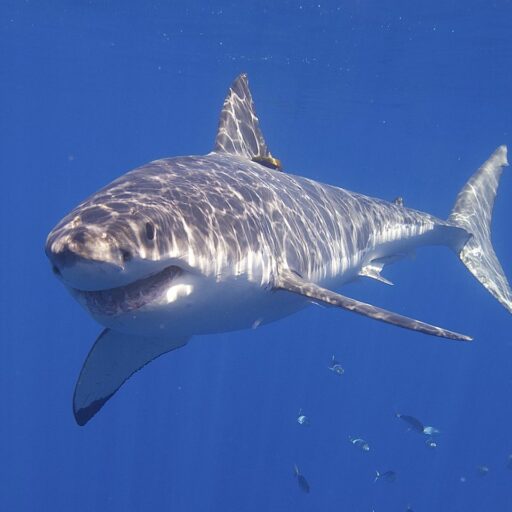
The ocean’s apex predator appears to be staging a comeback in the US. Counting sharks is a tricky business, but experts believe that great whites and other species are returning to the country’s waters. A recent study identified Cape Cod as a particular hotspot.
Protections for sharks have increased in the US over the decades, culminating in a ban on shark finning. There have also been efforts to restore sharks’ favourite prey: grey seals.
“We are seeing the resurgence of not only the white shark but also many of the other species,” Dr Bob Hueter, chief scientist for OCEARCH, a research organisation, told CNN.
Globally, the picture is less promising. A 2021 study found that a third of sharks and rays are threatened with extinction, due partly to hunting.
Image: Elias Levy
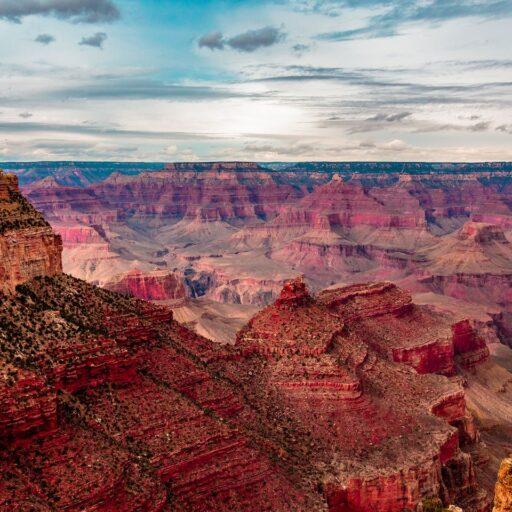
President Joe Biden has safeguarded tribal territories surrounding the Grand Canyon by adding them to a list of more than 130 protected sites.
Biden used his powers under the Antiquities Act to create the Baaj Nwaavjo I’tah Kukveni – Ancestral Footprints of the Grand Canyon National Monument, protecting almost a million acres of land from uranium mining.
The designation – which includes the headwaters of the Colorado River – comes after years of lobbying by environmentalists and tribal leaders. The area is home to a dozen native tribes, thousands of culturally important sites, and iconic wildlife including bald eagles, bison and the threatened California condor.
“Much of the health and vitality of the Grand Canyon region today is attributable to the tireless work of Tribal Nations and Indigenous peoples, the lands’ first and steadfast stewards,” Biden said, adding that creation of the national monument would serve as “an important next step in understanding and addressing past injustices.”
Image: Sojy John

Taiwan is the latest nation to take on period poverty, with its Ministry of Education unveiling a NT$100m (£2.5m) package to fund free menstrual products in schools and universities.
The measure includes grants for low-income learners to access period products, which is expected to benefit 95,000 students. Provision is also being made via public venues such as libraries, museums and art centres in major cities.
Similar policies exist in countries such as Kenya, New Zealand and Botswana, where pads and tampons are free through schools. Parts of Canada and France also have measures in place. Leading the way is Scotland, which has provided free sanitary products since 2022.
Image: Natracare

It’s been a summer of wildfires and record temperatures. If you’re working on the frontlines of the climate crisis, how do you stay positive?
This week, Positive News asked climate scientists, environmental activists, lawyers and politicians what brings them hope for the future – and this is what they said.
Image: Lawyer Farhana Yamin. Credit: Kelly Hill

If hitting the magic 10,000 steps a day sometimes feels like an impossible task, take heart – a new analysis reveals health benefits kick in at as few as 2,300, while 4,000 is enough to cut the risk of premature death.
Researchers led by Maciej Banach, professor of cardiology at the Medical University of Lodz, Poland, analysed step count studies involving almost 227,000 people. They found that 2,337 steps a day benefitted the heart and blood vessels, while walking at least 3,967 steps reduced the risk of dying from any cause. Every 1,000 steps over 4,000 cut the chance of early death by 15 per cent, the study concluded.
“This applied to both men and women, irrespective of age, and irrespective of whether you live in a temperate, subtropical or subpolar region of the world, or a region with a mixture of climates,” said Banach.
Read more: eight habits to help you live longer
Image: Tyler Nix

A successful attempt to overturn a wild camping ban on Dartmoor – a much-loved English beauty spot – has given new momentum to land access campaigns.
In January, a high court ended the right to wild camp on Dartmoor. The case was brought by hedge fund manager, Alexander Darwall, who owns a large Dartmoor estate.
The judgement turbocharged interest in campaigns like the Right to Roam, emboldening Dartmoor National Park Authority to appeal against the decision, which it has now won. Read more here.
Image: Stephen Blake Photography/iStock

As another retail giant collapses into administration, many are asking: what can be done to save the UK’s ailing high streets?
The homeware chain Wilko is the latest retailer to call in the administrators, putting 12,000 jobs and 400 prime-location shops at risk.
But there is hope for the high street yet. Here are 10 ideas to revive the UK’s town and city centres.
Image: Phil Hearing
Main image: Sonaal Bangera
Additional reporting by Gavin Haines, Daisy Greenwell and Mark Stratton.
Get your weekly fix of good news delivered to your inbox every Saturday, by signing up to the Positive News email newsletter.
Help us break the bad news bias
Positive News is helping more people than ever to get a balanced and uplifting view of the world. While doom and gloom dominates other news outlets, our solutions journalism exists to support your wellbeing and empower you to make a difference towards a better future. And as Positive News’ audience and impact grows, we’re showing the rest of the media that good news matters.
But our reporting has a cost and, as an independent, not-for-profit media organisation, we rely on the financial backing of our readers. If you value what we do and can afford to, please consider making a one-off or regular contribution as a Positive News supporter. Give once from just £1, or join 1,000+ others who contribute an average of £3 or more per month. You’ll be directly funding the production and sharing of our stories – helping our solutions journalism to benefit many more people.
Join our community today, and together, we’ll change the news for good.
